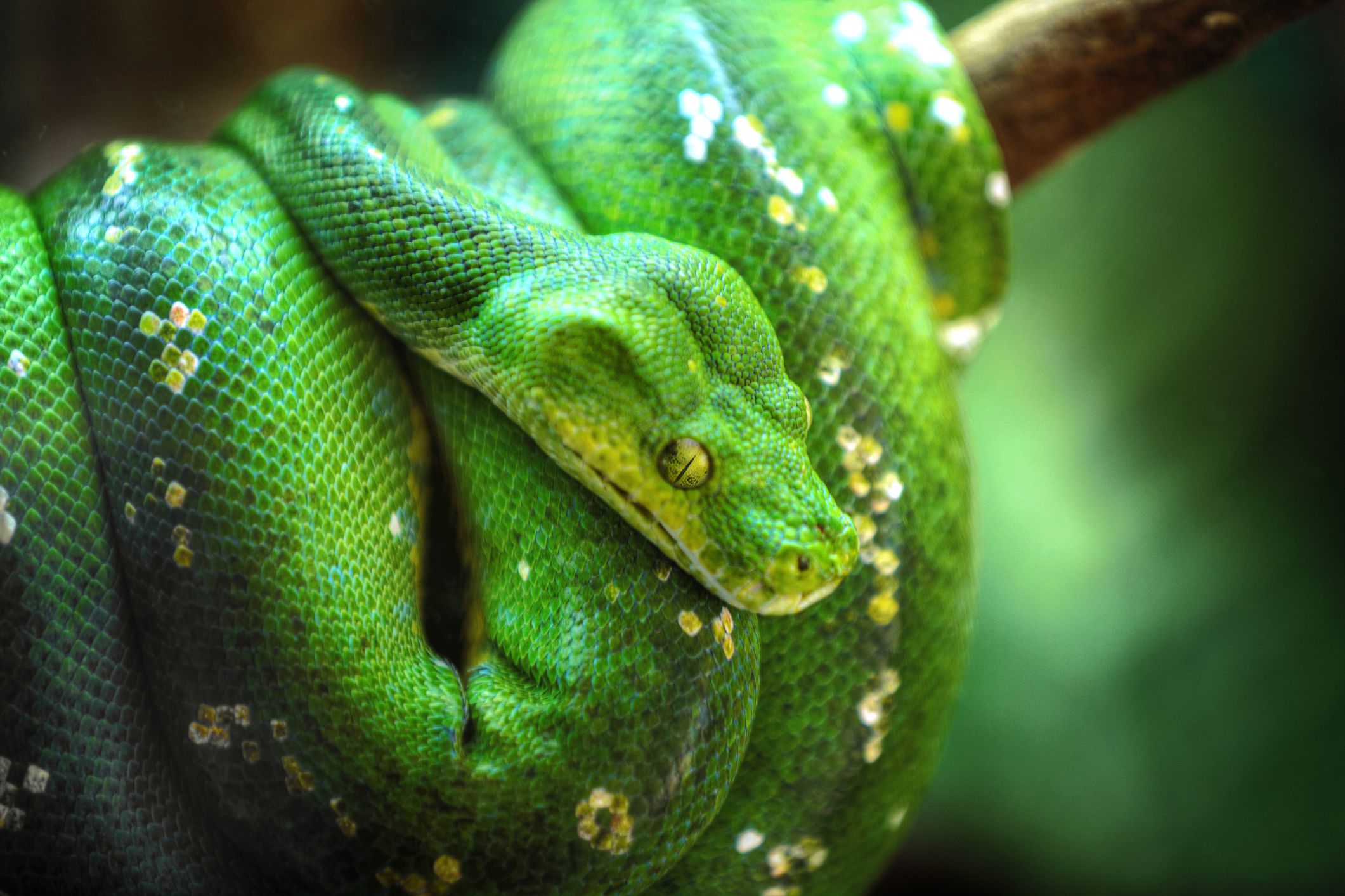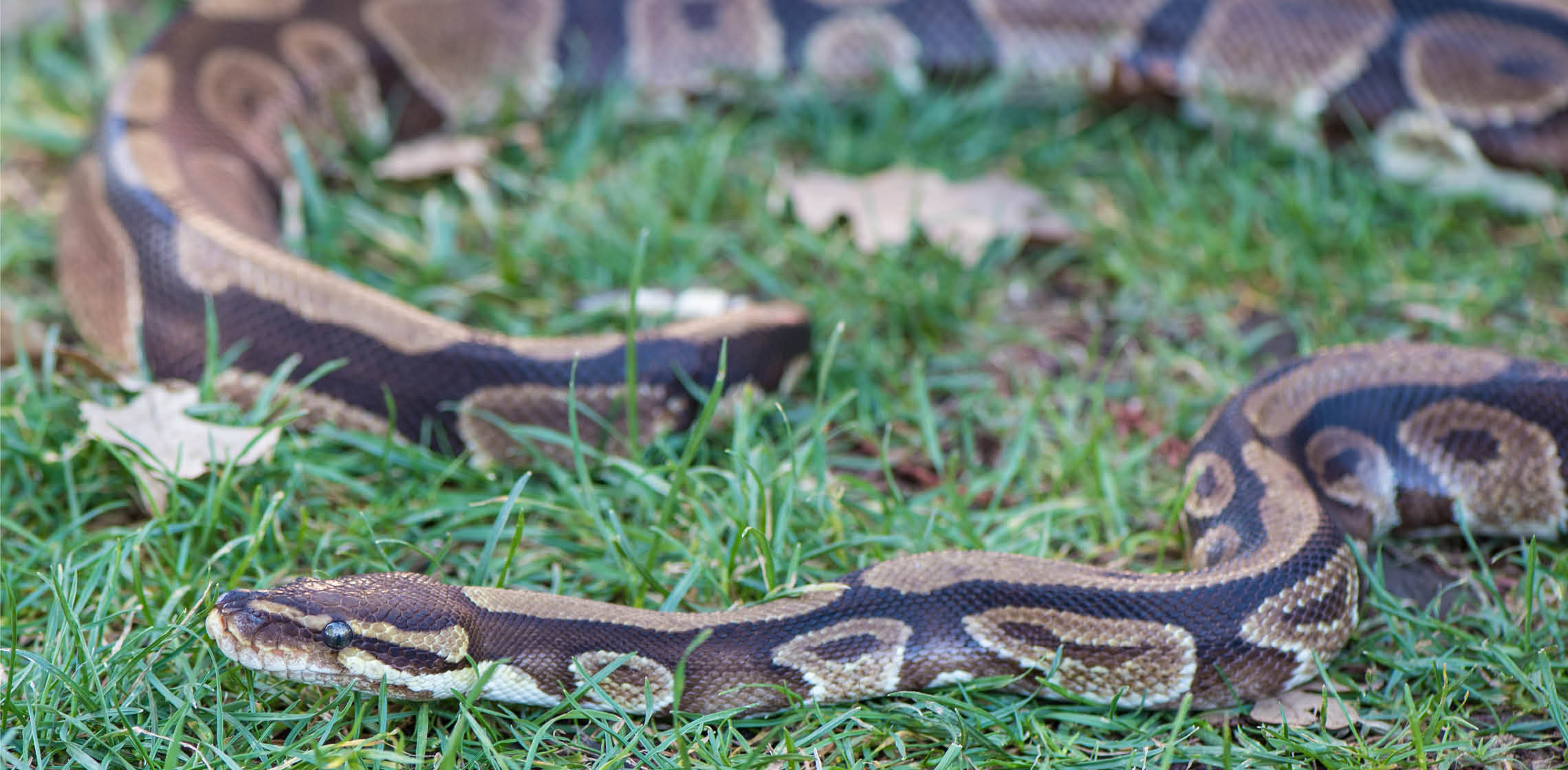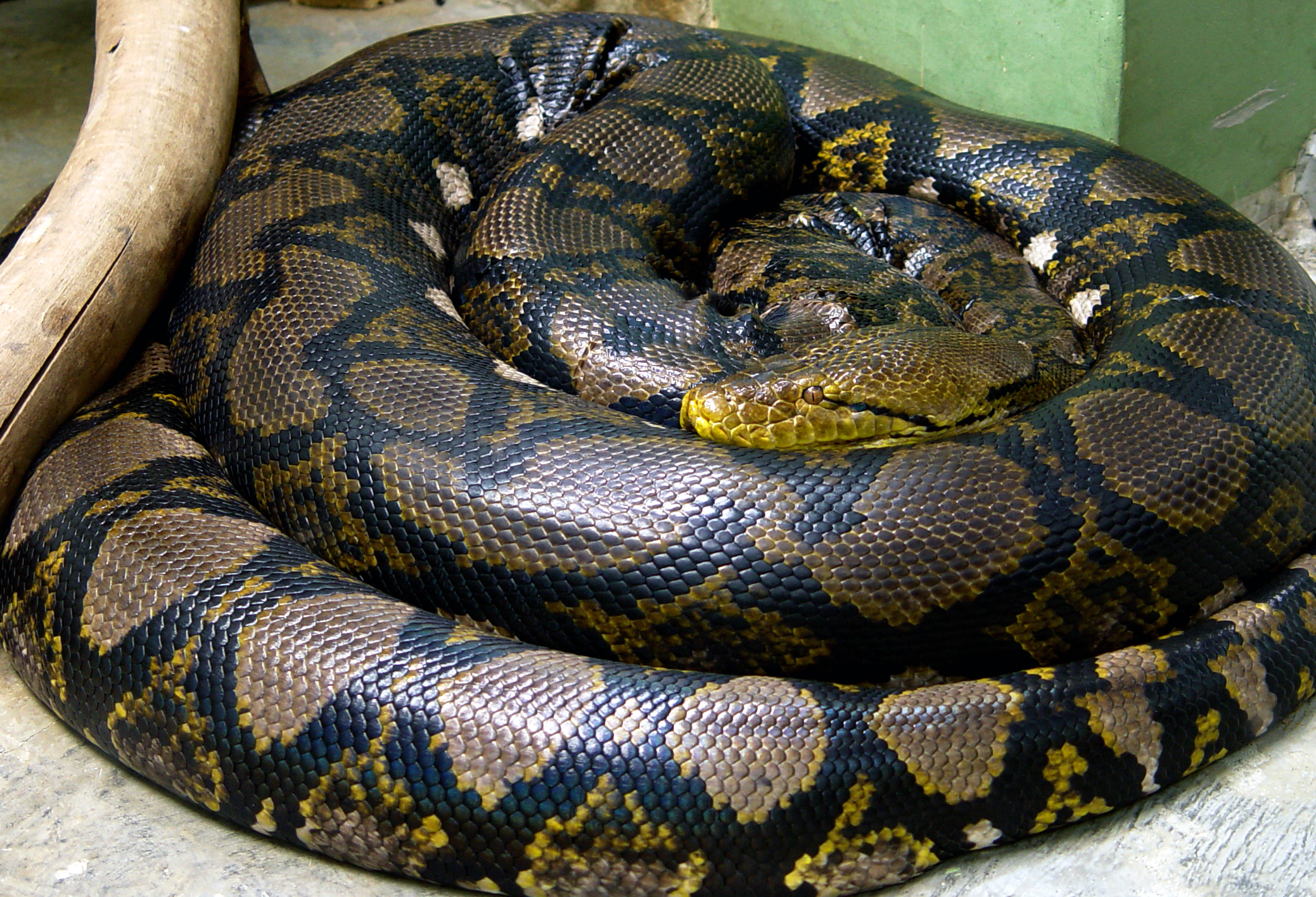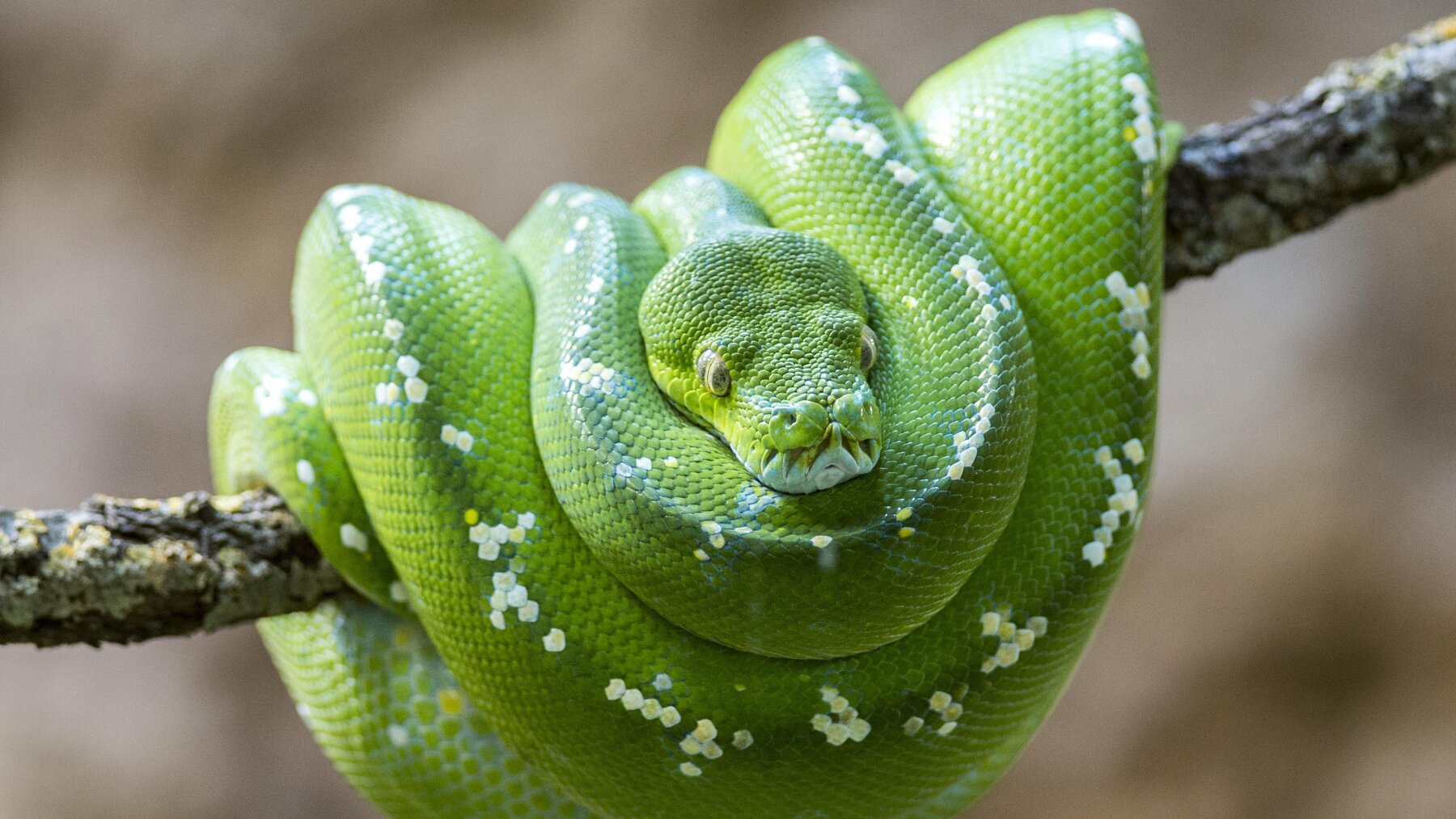Pythons are a family of nonvenomous snakes found in Africa, Asia, and Australia, with about 40 known species. Pythons are constrictors, which means they wrap their thick bodies around prey and squeeze until it dies. They are known for their large size, with some species growing up to 30 feet long.
Pythons are divided into 10 different genera, and each genus contains several different species. In this article, we will take a closer look at five of the most well-known types of pythons, including the ball python, Burmese python, reticulated python, green tree python, and carpet python.
You are reading: 5 Types Of Pythons

5 Types Of Pythons
Ball Python/Royal Python

The ball python, also known as the royal python, is a python species native to West and Central Africa. It is the smallest of the African pythons, growing to a maximum length of 182 cm (72 in).
Ball pythons are typically nocturnal or crepuscular, meaning that they are active during dusk, dawn, and/or nighttime. This species is known for its defense strategy that involves coiling into a tight ball when threatened, with its head and neck tucked away in the middle.
This defense behavior is typically employed in lieu of biting, which makes this species easy for humans to handle and has contributed to their popularity as a pet. Ball pythons are considered a medium-bodied snake, with an average length of 4-5 feet.
They are notable predators of small mammals, which if left unchecked would have a devastating ecological impact on the environment.
If you choose to get a ball python as a pet, it is important to do your research to make sure your snake is not a wild snake, as wild snakes may have diseases or parasites which can spread to other snakes within the supplier’s collection.
Burmese Python
The Burmese python is one of the largest species of snakes in the world, native to a large area of Southeast Asia. They are capable of reaching 23 feet or more in length and weighing up to 200 pounds with a girth as big as a telephone pole.
Burmese pythons are dark-colored non-venomous snakes with many brown blotches bordered by black down the back. In the wild, Burmese pythons typically grow to 5 meters (16 feet), while specimens of more than 7 meters (23 feet) are unconfirmed.
This species is sexually dimorphic in size; females average only slightly longer, but are considerably heavier and bulkier than the males. Burmese pythons are carnivores, surviving primarily on small mammals and birds.
Read more : Top 8 Fastest Water Animals
They have poor eyesight and stalk prey using chemical receptors in their tongues and heat-sensors along the jaws. They kill by constriction, grasping a victim with their sharp teeth, coiling their bodies around the animal, and squeezing until it suffocates.
Burmese pythons are solitary animals and are generally only seen together during spring mating. The presence of Burmese pythons in Florida has led to severe declines in Everglades mammal populations, making them a threat to native wildlife and ecosystems of South Florida.
Reticulated Python

The reticulated python (Malayopython reticulatus) is a python species native to South and Southeast Asia. It is the world’s longest snake, and the third heaviest after the green anaconda and Burmese python.
Reticulated pythons are nonvenomous constrictors, meaning they kill their prey by squeezing it to death. They are listed as least concern on the IUCN Red List because of their wide distribution. However, in several countries in their range, they are hunted for their skin, for use in traditional medicine, and for sale as pets.
Reticulated pythons are ambush predators, waiting until prey wanders within strike range before seizing it in their coils and killing it by constriction. Their natural diet includes mammals and occasionally birds. Adult females lay between 15 and 80 eggs per clutch, and hatchlings are at least 61 cm (2 ft) in length.
Reticulated pythons have been observed shivering to increase the ambient temperature around them. Reticulated pythons are not recommended as pets for most people, as they can grow to be very large and difficult to handle.
Green Tree Python

The green tree python (Morelia viridis) is a species of snake in the family Pythonidae. This species is native to New Guinea, some islands in Indonesia, and the Cape York Peninsula in Australia.
The green tree python is known for its bright green coloration, which helps it blend in with the foliage of the trees in which it lives. Females are slightly larger and heavier than males, and the species can reach a total length (including tail) of 2 m (6.6 ft) and a weight of 1.6 kg (3.5 lb).
The green tree python is a nonvenomous snake that mainly hunts and eats small reptiles and mammals. This species is popular as a pet, and numbers in the wild have suffered due to large-scale smuggling of wild-caught green tree pythons in Indonesia. Despite this, the green tree python is rated as least concern on the IUCN Red List of endangered species.
Key Facts:
– Scientific name: Morelia viridis
– Family: Pythonidae
– Native to: New Guinea, some islands in Indonesia, and the Cape York Peninsula in Australia
– Size: Up to 2 m (6.6 ft) in length and 1.6 kg (3.5 lb) in weight
– Diet: Small reptiles and mammals
– Conservation status: Least concern on the IUCN Red List of endangered species
Carpet Python
Read more : 13 Different Types Of Snapper Fish Ranked By Size
Carpet python (Morelia spilota) is a large snake species of the Pythonidae family found in Australia, New Guinea, Bismarck Archipelago, and the northern Solomon Islands.
There are many subspecies of carpet pythons, with six subspecies recognized by ITIS. Carpet pythons are medium-sized pythons, and they are named for their beautiful markings, which resemble an oriental carpet pattern. They are docile snakes with a shy temperament, making them a popular pet among snake enthusiasts.
Carpet pythons kill prey by constriction, and their diet consists mainly of small mammals, birds, and lizards. Incidents of carpet pythons devouring domestic cats and small dogs have been reported.
The different types of carpet pythons vary in size, with a jungle carpet python growing up to 12 feet while a diamond python reaches a length of seven feet.
Carpet pythons are probably the most commonly seen snake in suburban backyards in Australia. The carpet python’s population is unknown, but according to the IUCN Red List, this species is reported as Least Concern. Habitat loss is thought to be the reason behind its decreasing population.
FAQS
1. What is a python?
A python is any species of snake belonging to the Pythonidae family of snakes. Pythonidae is roughly in the middle as far as its overall size, with it containing 42 different species of pythons that are divided into 10 different genera.
2. What are the five types of pythons discussed in this article?
The five types of pythons discussed in this article are the ball python/royal python, Burmese python, reticulated python, green tree python, and carpet python.
3. What is the difference between a python and a boa?
Both pythons and boas are constrictors, meaning they kill their prey by wrapping themselves around it and squeezing it until it dies. However, pythons and boas are different kinds of snakes.
4. What is the largest species of python?
The reticulated python is the world’s longest snake, reaching a length of up to 32 feet (10 meters).
5. Are pythons dangerous to humans?
Pythons are not venomous and are generally not considered dangerous to humans. However, they are powerful constrictors and can cause injury or death if they wrap around a person and squeeze too tightly.
6. Can I keep a python as a pet?
Some species of pythons, such as the ball python, are popular as pets. However, pythons can grow to be very large and difficult to handle, so they are not recommended as pets for most people.
7. Are any of the types of pythons discussed in this article endangered?
The green tree python is rated as least concern on the IUCN Red List of endangered species, while the Burmese python is an invasive species in the Florida Everglades and is considered a threat to native wildlife and ecosystems. The population status of the other types of pythons discussed in this article is unknown.
Source: https://petstutorial.com
Category: Animals










